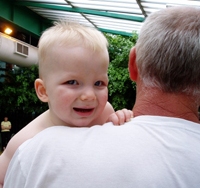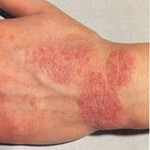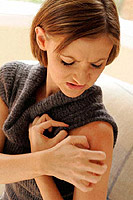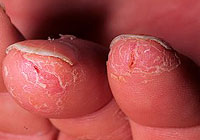Even if you look quite usually, it is possible that your child can be born albino. Cause - in genes. About how to inherit albinism, read in this article.
Content
White disease
 Name «albinism» Comes from Latin word Albus - white. Albinism is the absence of pigment in the skin, hair, eye fabrics. There are full albinism, in which the pigment is absent in the whole body, and partial albinism, in which the pigment is not only in separate organs, for example in the eyes.
Name «albinism» Comes from Latin word Albus - white. Albinism is the absence of pigment in the skin, hair, eye fabrics. There are full albinism, in which the pigment is absent in the whole body, and partial albinism, in which the pigment is not only in separate organs, for example in the eyes.
With a general albinism, all skin, including the skin of the eyelids, has a pale pink or milky white color. Eyebrows and eyelashes are also blanded, white.
Changes in albinism are not limited to the skin, but manifest themselves greater or less pigment insufficiency inside the eye: in the iris, in the choroid, in the retina. Because of this, photophobia is developing - photophobia, a person cannot carry a bright light and forced to wear dark glasses or dark contact lenses with a hole in the center.
This deviation is associated with the absence of a pigment in the body, which is called Melanin. Melanin gives coloring our skin, hair, eyes. It is contained in the vascular sheath of the eye, so that the light enters the eye only through the pupil. The role of melanin in the eye is very important - imagine that it will be with the image on the film, if at the moment of photographing the wall of the device will skip the light?
Albinism and heredity
At the heart of albinism there is a violation of education in skin cells, hair bulbs and in the eye of a black pigment - melanin. About 700 pedigree families were published, whose members suffered from albinism. Hereditary diseases tend to spread in small ethnic groups due to the high frequency of related marriages. Foci of albinism in Northern Ireland have been identified. In the South Panama among the Caribbean Kun tribe, hundreds of albinos were discovered. The tropical sun burned the albinotic skin very much and blinded the eyes, so albinos in the area led a nightlife. They were called «Children of the Moon».
Is there a risk that the second child in the family will be albino? Yes! Such an opportunity is always in hereditary disease, so it is best to contact the medical and genetic advice. Genetic doctor will answer all questions and give you a professional council.
Eye albinism is transmitted more often by recessive type, sometimes on a recessive type associated with the floor (as well as hemophilia and color blindness). In the latter case, a woman has no obvious signs of the disease, but is a carrier of the pathological gene and transfers the disease to son. The carriers of the defective gene, although they do not get sick, but in 85% of cases have signs of a lung impairment of skin pigmentation, hair and eyes: cripples of iris, pale ophosparium, bleached areas of leather and hair, freckles. The listed features can identify hidden carriers of defective genes.
If a child with a genetic disease appeared in the family, the question of risk for the second child always arises. There are methods that allow you to find a mutation responsible for the disease. With the help of genetic diagnostic tests based on DNA analysis, you can identify genetic defects in the body in the early stages of its development and even before the birth of a child.
Nevable unpropressive hereditary anomalies are not grounds for restricting detection, but this question is always better to solve with a specialist. Although the last word always remains for parents!
How Albinos lives
Child - Albino. The reason is that its genes do not give instructions to produce a pigment that stains the skin, hair, eyelashes, eyes. Therefore, the child is very pale, his iris does not delay the light, as it is deprived of the pigment, and has the color of blood flowing into the forming vessels.
The child should avoid the Sun, since Albinos is high the risk of sunburn and skin cancer. Strong light harms his eyes, so he has bad eyesight. He is forced to wear dark glasses or contact lenses to protect against light. Fortunately, he has a light form of albinism and there are no more pronounced changes.
In all the rest, he is a normal child, cheerful, learning well. If the children in school did not tease him, everything would be fine. But mom should think about the future of the Son. Sometimes vision with age deteriorates and the child becomes difficult to study in a common school. In such cases, children with hereditary eye diseases are better studying in special schools, where modern technical means and experienced teachers facilitate their auditorium.
Any mother concerns the future of her child. It is better to choose a profession in advance that is not associated with staying on the street and not requiring very acute visual.
Remember: Contemporary science gives us the opportunity to control and predetermine the development of our organism and puts a lot of questions before us. The main thing - she makes us think, why not all the same, why everyone can not be the same.









